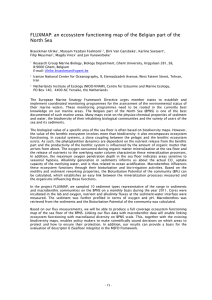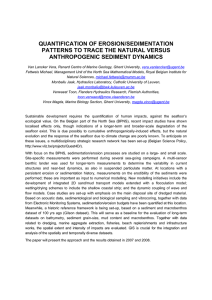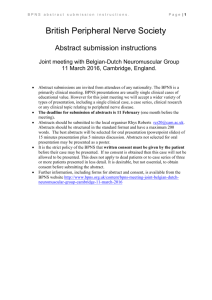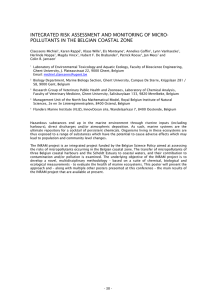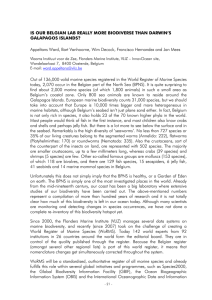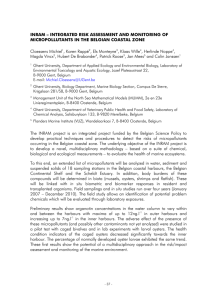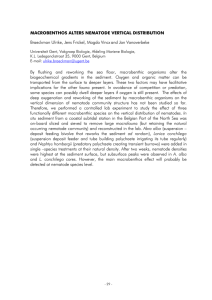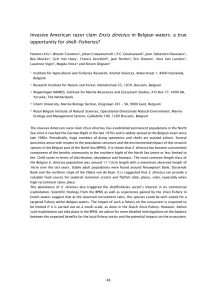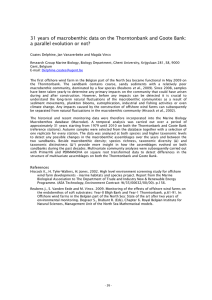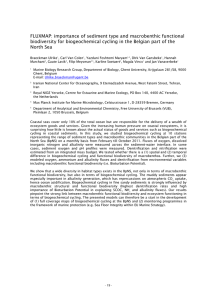THE ROLE OF SUSPENDED PARTICULATE MATTER IN THE
advertisement
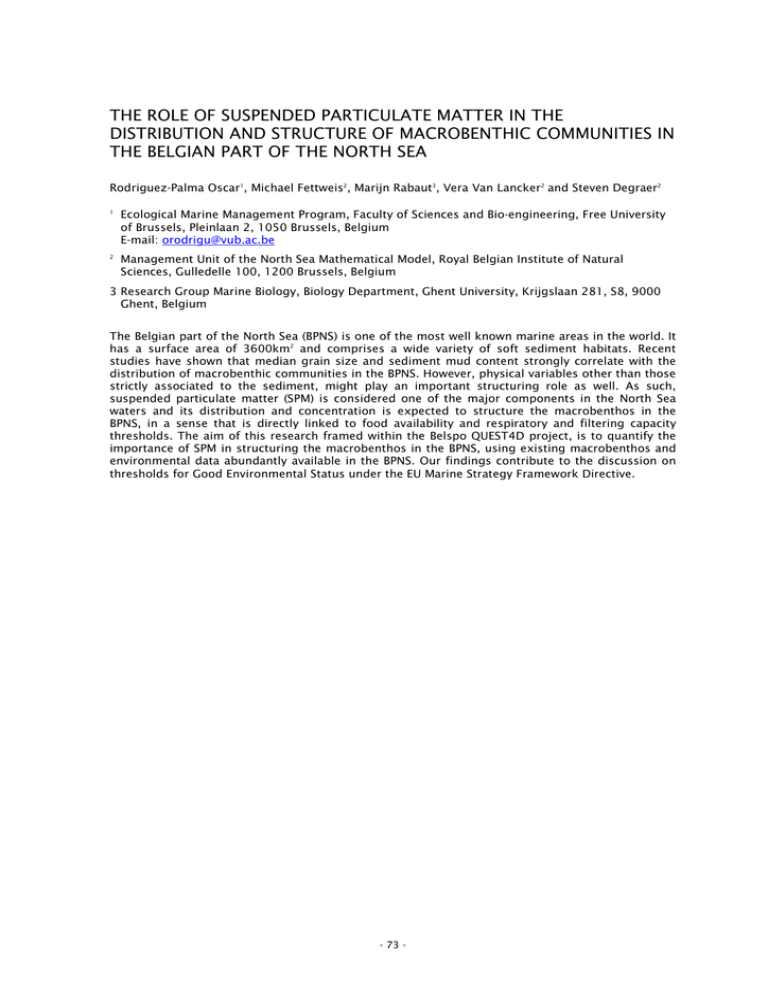
THE ROLE OF SUSPENDED PARTICULATE MATTER IN THE DISTRIBUTION AND STRUCTURE OF MACROBENTHIC COMMUNITIES IN THE BELGIAN PART OF THE NORTH SEA Rodriguez-Palma Oscar1, Michael Fettweis2, Marijn Rabaut3, Vera Van Lancker2 and Steven Degraer2 1 Ecological Marine Management Program, Faculty of Sciences and Bio-engineering, Free University of Brussels, Pleinlaan 2, 1050 Brussels, Belgium E-mail: orodrigu@vub.ac.be 2 Management Unit of the North Sea Mathematical Model, Royal Belgian Institute of Natural Sciences, Gulledelle 100, 1200 Brussels, Belgium 3 Research Group Marine Biology, Biology Department, Ghent University, Krijgslaan 281, S8, 9000 Ghent, Belgium The Belgian part of the North Sea (BPNS) is one of the most well known marine areas in the world. It has a surface area of 3600km2 and comprises a wide variety of soft sediment habitats. Recent studies have shown that median grain size and sediment mud content strongly correlate with the distribution of macrobenthic communities in the BPNS. However, physical variables other than those strictly associated to the sediment, might play an important structuring role as well. As such, suspended particulate matter (SPM) is considered one of the major components in the North Sea waters and its distribution and concentration is expected to structure the macrobenthos in the BPNS, in a sense that is directly linked to food availability and respiratory and filtering capacity thresholds. The aim of this research framed within the Belspo QUEST4D project, is to quantify the importance of SPM in structuring the macrobenthos in the BPNS, using existing macrobenthos and environmental data abundantly available in the BPNS. Our findings contribute to the discussion on thresholds for Good Environmental Status under the EU Marine Strategy Framework Directive. - 73 -

